jamesp
Cave Dweller 
Member since October 2012
Posts: 36,607
|
Post by jamesp on Mar 10, 2022 9:21:48 GMT -5
Why not do a specimen thread on coral considering we have collected 100's from Valdosta Ga to Tampa Fl. This one found piled with other round ones like it on a particular river bar. Normally the center of the coral head lacks silicification, oddly these chose to silicify well in the center and poorly at the husk. Each rock bar in the river usually has silicified coral with it's own signature. Slow river currents on flat lands rarely moves the coral down the river. They were silicified close to where they lay. Coral is similar to a tree, it can be sawn with the light tubes(down the grain) or across the tubes(across the grain). This one with the grain or with the tubes. The heavy husk is porous and poorly silicified. Tubes running left to right.  The sun facing side or coralite/polyp side is on left, root side is on right. Though round this is only a portion of a larger coral head. In most cases sections of the mother head silicify and forces of nature breaks them into many individual pieces. This one sawed dead in half. Oh yea, the husk sheds sharp silica needles that fester when they puncture the epidermis. Gloves or thick skin suggested.  Withlacoochee River @ Fl/Ga state line below Hwy 31 bridge. |
|
jamesp
Cave Dweller 
Member since October 2012
Posts: 36,607
|
Post by jamesp on Mar 10, 2022 10:49:25 GMT -5
Another like above from same gravel bar. Many of these were mounted in sawn halves on Lucite bases and sold to an interior decoration store in big Atlanta. They liked them. Sun side up and root side down.  |
|
lunker
Cave Dweller 
Member since April 2021
Posts: 430
|
Post by lunker on Mar 10, 2022 13:07:22 GMT -5
|
|
lunker
Cave Dweller 
Member since April 2021
Posts: 430
|
Post by lunker on Mar 10, 2022 13:17:39 GMT -5
And this one.  |
|
jamesp
Cave Dweller 
Member since October 2012
Posts: 36,607
|
Post by jamesp on Mar 10, 2022 13:31:07 GMT -5
Would love to see those sawn or a tip windowed with a hammer lunker. Intriguing patterns for sure. Especially #3 down. They have to be silicified or agatized to survive the roll down the Yellowstone. If the hillside source could be found you may find some with color if they are in clay. |
|
RWA3006
Cave Dweller 
Member since March 2009
Posts: 4,633 
|
Post by RWA3006 on Mar 10, 2022 15:22:27 GMT -5
jamesp Bravo, I was hoping you'd start this thread!
|
|
jamesp
Cave Dweller 
Member since October 2012
Posts: 36,607
|
Post by jamesp on Mar 10, 2022 21:26:42 GMT -5
jamesp Bravo, I was hoping you'd start this thread! Thanks for the hint Randy. I may not be the best host but the coral is quite appealing, albeit not as fascinating as coprolite. Like your coprolites have been your treasure the coral was a rock I enjoyed collecting for for many years. Us collectors should all have a pet rock  . |
|
|
|
Post by amygdule on Mar 11, 2022 2:23:53 GMT -5
|
|
|
|
Post by fernwood on Mar 11, 2022 2:30:33 GMT -5
Thanks for starting this jamesp Here are a couple of favosites from my Wisconsin corn field. 1    2  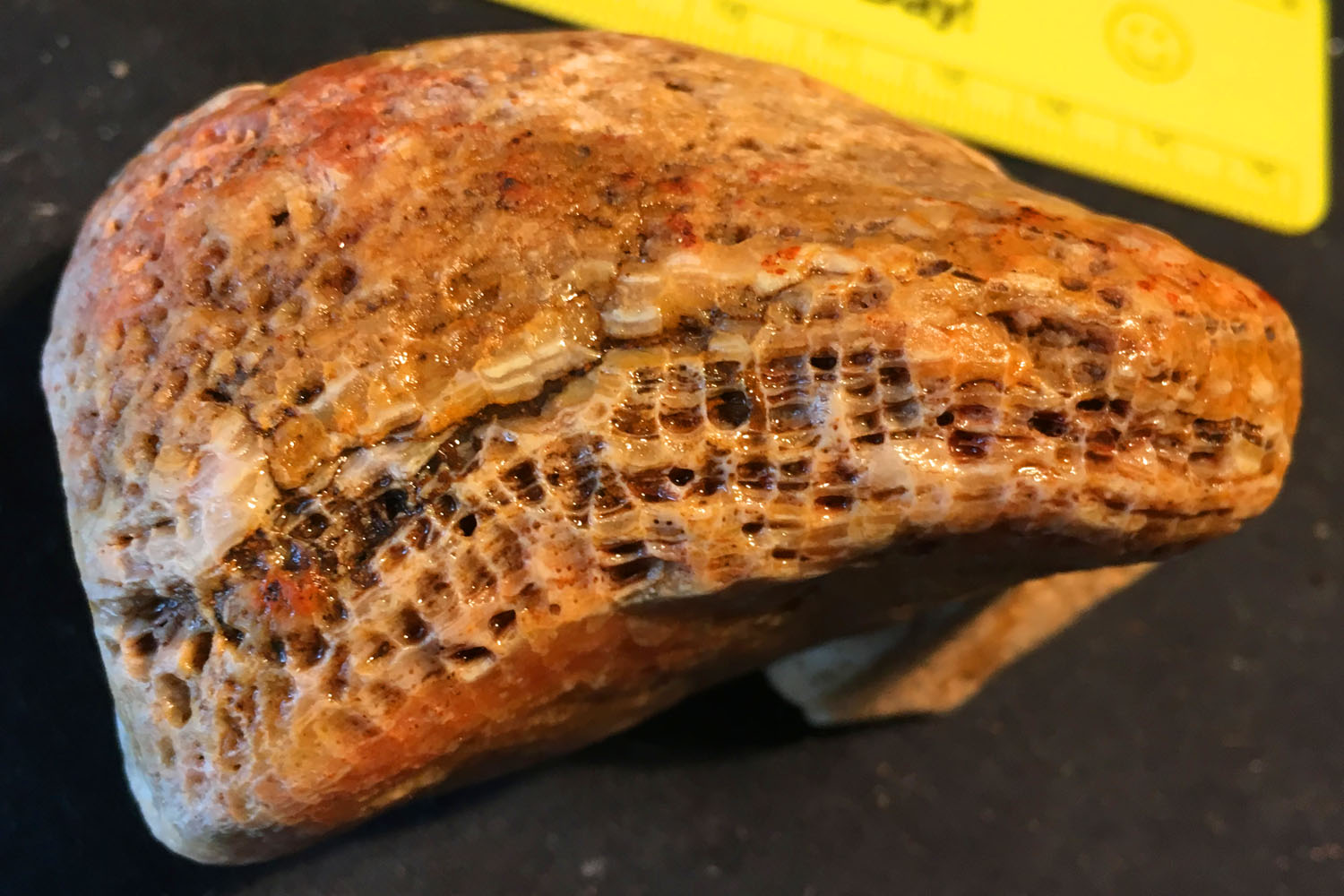  |
|
jamesp
Cave Dweller 
Member since October 2012
Posts: 36,607
|
Post by jamesp on Mar 11, 2022 7:03:33 GMT -5
Thanks for sharing the Oregon coast coral amygdule. Very nice coralite and tube details. Are they easy to find or infrequent ? If you know the era and type please share. |
|
jamesp
Cave Dweller 
Member since October 2012
Posts: 36,607
|
Post by jamesp on Mar 11, 2022 7:09:25 GMT -5
Thanks for starting this jamesp Here are a couple of favosites from my Wisconsin corn field. 1    2    In the corn field fernwood ? That's a heck of a place to find coral lol. Knowing Wisconsin and the Great Lake area the original location of these corals may a distance away from your cornfield with all that glacial activity. What do you know about their origin, era and type ? Thanks for sharing. |
|
jamesp
Cave Dweller 
Member since October 2012
Posts: 36,607
|
Post by jamesp on Mar 11, 2022 7:25:29 GMT -5
Ok. We now have coral from 4 locations. Florida, the Yellowstone River, the Oregon coast and fernwood's Wisconsin corn field. The state of Florida has ID'd the Florida coral and the era it came from. By the way it is a shallow water sun loving coral preferring 0 to 20 feet deep.(I'll have to chase that info to post). Perhaps lunker (Yellowstone River), amygdule (Oregon coast) and fernwood (seriously, Beth's Wisconsin cornfield) can share the ID, age/era, and habitat of their corals. |
|
jamesp
Cave Dweller 
Member since October 2012
Posts: 36,607
|
Post by jamesp on Mar 11, 2022 7:32:23 GMT -5
Interesting fact about the present day coral in our oceans(from Wiki):
"Most coral reefs were formed after the Last Glacial Period when melting ice caused sea level to rise and flood continental shelves. Most coral reefs are less than 10,000 years old."
The bulk of our modern coral is more like 5000 to 6000 years old when water temps stabilized to what they are today.
|
|
|
|
Post by fernwood on Mar 11, 2022 7:36:55 GMT -5
Was identified by local UW geologists as favosites.
My land is the confluence of the latest glacier in this area, about 10,000 years ago and ancient glacial Lake Wisconsin.
My land and near where I live is covered with eskers and other featurs.
My fields are near where the land elevation increases about 500'.
I was told that the fossils on my land could be glacial debris or from lake wisconsin.
I have found many other than corals. Snails, clams, Algae, sponges, etc. Many interesting rocks, too.
Just love being able to walk my land and find fossils.
|
|
jamesp
Cave Dweller 
Member since October 2012
Posts: 36,607
|
Post by jamesp on Mar 11, 2022 8:02:06 GMT -5
lunker the Yellowstone River might be a more complicated site to identify due to the diversity in that area. The Yellowstone Park fossil specialists had this to say about coral in that area for what it is worth: Fossil Invertebrates Fossil invertebrates are abundant in Paleozoic rocks, especially the limestones associated with the Madison Group in the northern and south-central parts of the park. They include corals, bryozoans, brachiopods, trilobites, gastropods, and crinoids. Trace fossils, such as channeling and burrowing of worms, are found in some petrified tree bark.
|
|
jamesp
Cave Dweller 
Member since October 2012
Posts: 36,607
|
Post by jamesp on Mar 11, 2022 8:14:18 GMT -5
Was identified by local UW geologists as favosites. My land is the confluence of the latest glacier in this area, about 10,000 years ago and ancient glacial Lake Wisconsin. My land and near where I live is covered with eskers and other featurs. My fields are near where the land elevation increases about 500'. I was told that the fossils on my land could be glacial debris or from lake wisconsin. I have found many other than corals. Snails, clams, Algae, sponges, etc. Many interesting rocks, too. Just love being able to walk my land and find fossils. Yes, glacial debris. Those glaciers can alter the original location of fossils in a quick ! You have an ID ! Far out/well done - favosites on Wiki Beth. Check it out: "Favosites is an extinct genus of tabulate coral characterized by polygonal closely packed corallites (giving it the common name "honeycomb coral").[1] The walls between corallites are pierced by pores known as mural pores which allowed transfer of nutrients between polyps. Favosites, like many corals, thrived in warm sunlit seas, feeding by filtering microscopic plankton with their stinging tentacles and often forming part of reef complexes.[2] The genus had a worldwide distribution from the Late Ordovician to Late Permian.[3]" Of course coral taxonomy is rarely simple due to complex sub-categories. species of Favosites(prepare yourself): F. abnormis F. adaverensis F. afghanicus F. antiquus F. bowerbanki F. burkhanensis F. desolatus F. exilis F. fallax F. favosiformis F. favosus F. fusiforme F. goldfussi F. gothlandicus F. hisingeri F. ingens F. intricatus F. issensis F. jaaniensis F. kalevi F. lichenarioides F. mirandus F. multicarinatus F. oculiporoides F. permica F. petropolitana F. praemaximus F. privatus F. serratus F. subfavosus F. subforbesi And it does not stop there. Coral is notorious for changing it's structure(for lack of better word) based on many various habitats like depth, water quality, sun access,etc etc. Modern studies have found this out. Even DNA identification methods have shortcomings. |
|
jamesp
Cave Dweller 
Member since October 2012
Posts: 36,607
|
Post by jamesp on Mar 11, 2022 8:49:14 GMT -5
amygdule This macro shows the corallites well. Awesome pattern. Let me compare it to one of the Florida species that is quite different. fernwood's favosites: "Favosites is an extinct genus of tabulate coral characterized by polygonal closely packed corallites (giving it the common name "honeycomb coral").[1] The walls between corallites are pierced by pores known as mural pores which allowed transfer of nutrients between polyps. Favosites, like many corals, thrived in warm sunlit seas" Note your coral has 'mural pores' between the corallites: 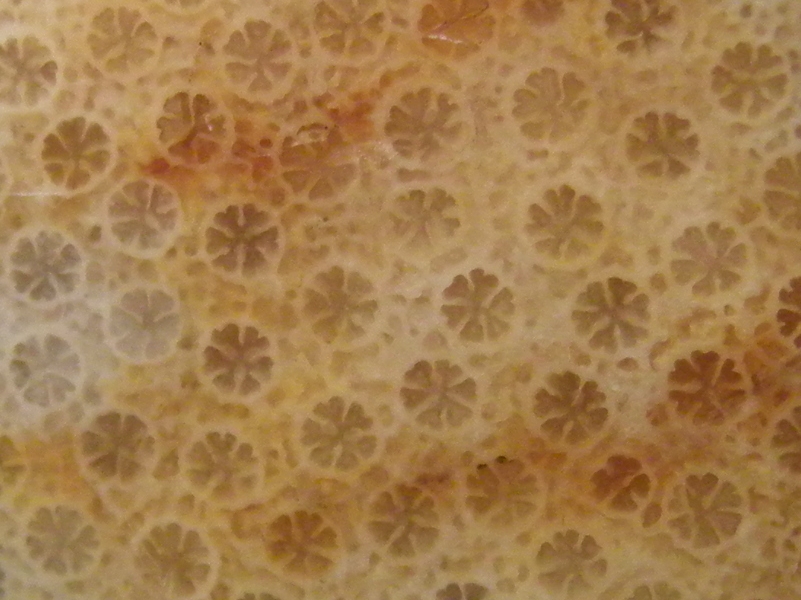 Check out this Florida species with no space(mural pores) between the corallites:  I do find coral in Florida that has mural pores. This is one of them: 
|
|
jamesp
Cave Dweller 
Member since October 2012
Posts: 36,607
|
Post by jamesp on Mar 11, 2022 9:29:13 GMT -5
"Down on the Withlacoochee River..." This river receives little conservation protection. Noticed illegal timber practices for miles along the shore. So the banks will cave in and silt will inundate the river bottom. It will lose it's natural beauty sooner than later. Welcome to Georgia where timbering rules. This day the river was at a near record low and waaay downstream a real load of coral is exposed. This trip tested boat and captain. No signs of rock hunters having hammered windows or visited this bar. Undisturbed. Only a limited amount could be collected due to it's weight burdening the upstream trip back home.  The bottom of this section of the river as far as eye can see is covered with coral. Guess what, the coral in the center of the river at the deepest pools has been laying in the mineral/metal rich sediment for many moons and has the most color absorbed. 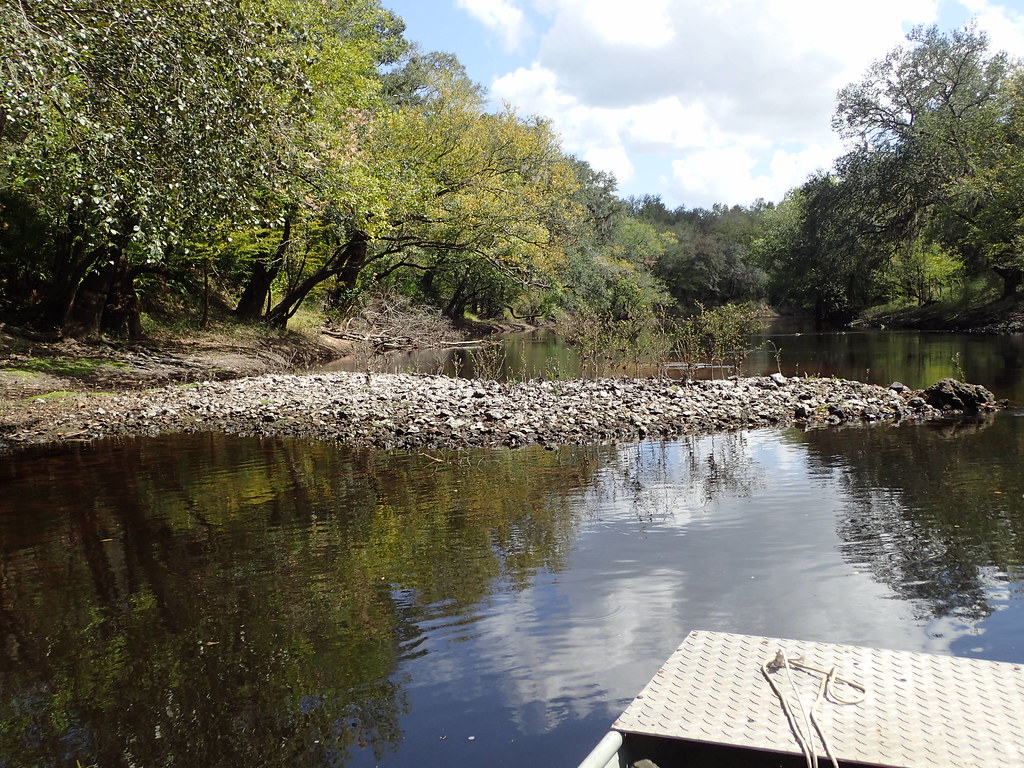 Windowed samples reveal some corallite patterns and color.  this one a trophy:  This site deserves a return. October fruit of the Tupelo Gum. Known for it's fine honey and interesting honey plantation history. 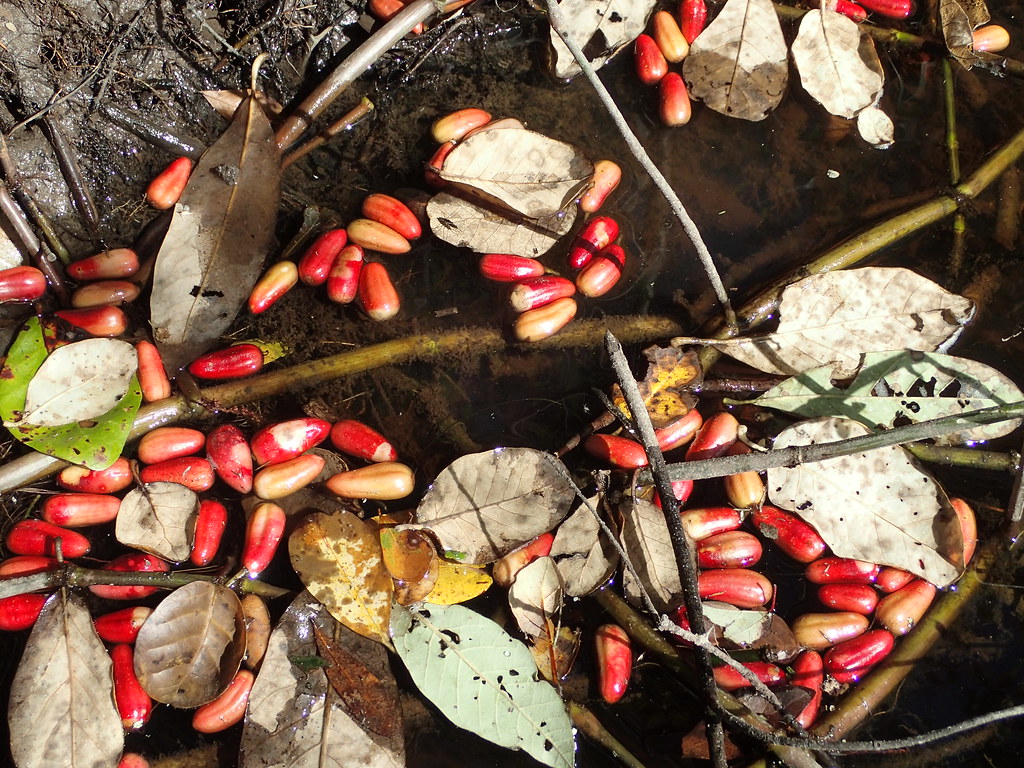 Low water obstruction and yes the boat did get hung up and the October water was cold.  Not so well silicified. Never would have known till the hammer hit it.  A probable hollow pseudomorph judging from the pimply surface. No hammers, must take home and saw. 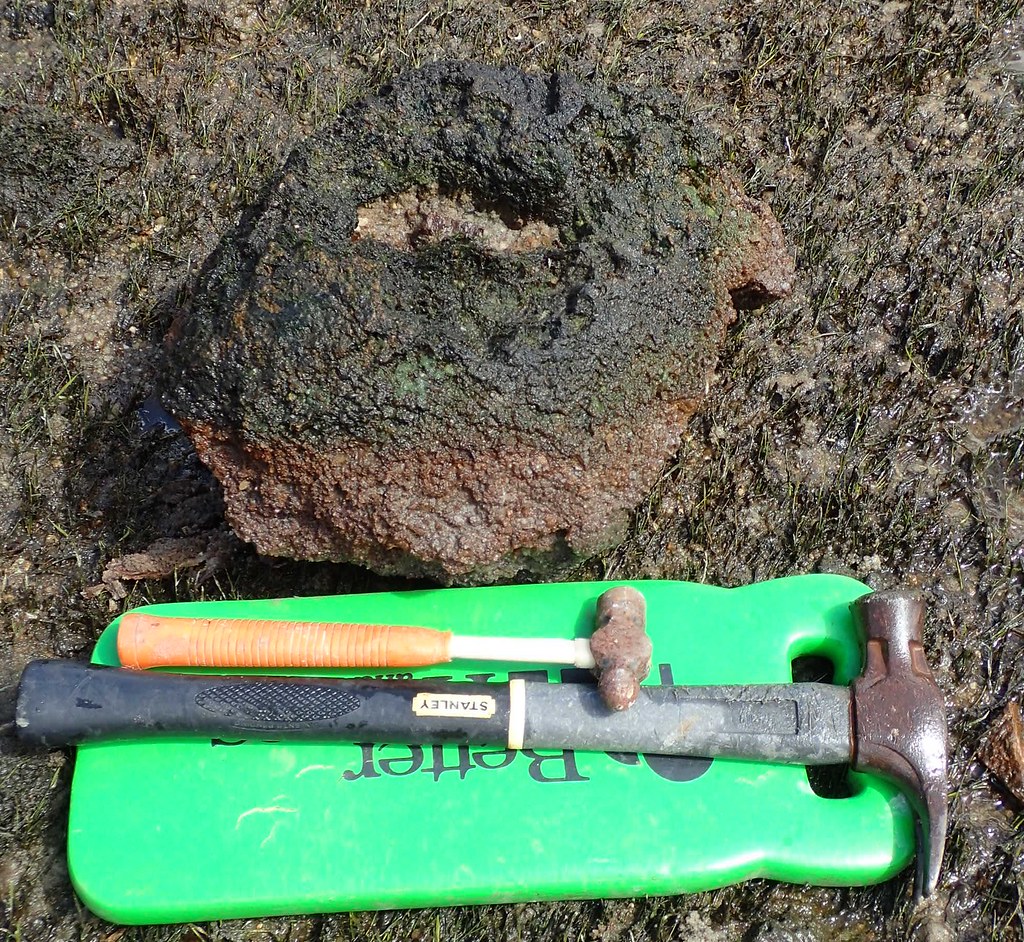 Target practice tree at the boat ramp. Leaving truck/trailer there gives that warm and fuzzy feeling. Better than having a bunch of law enforcement restricting collecting !  Local artifacts and dead Bahia grass tubers.  The USS Coral back at the Clyattville hotel. 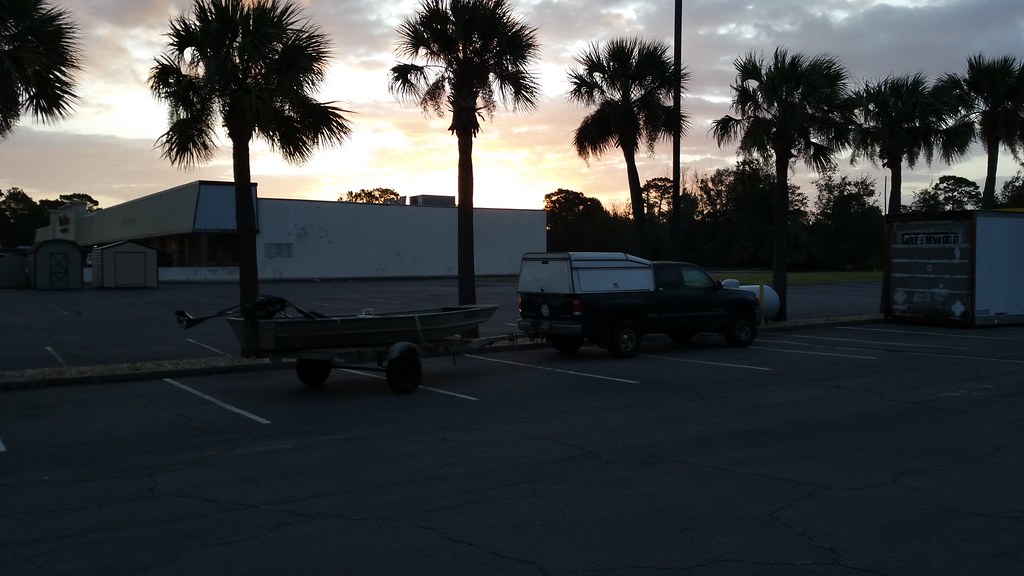 |
|
RWA3006
Cave Dweller 
Member since March 2009
Posts: 4,633 
|
Post by RWA3006 on Mar 11, 2022 13:16:12 GMT -5
Would a little Utah horn coral fit in this thread?  |
|
|
|
Post by amygdule on Mar 11, 2022 13:57:12 GMT -5
Cool coral jamespI'll get back to this thread when I'm not so busy  |
|